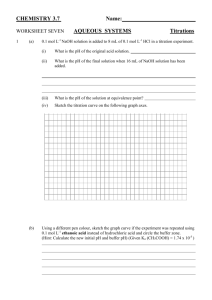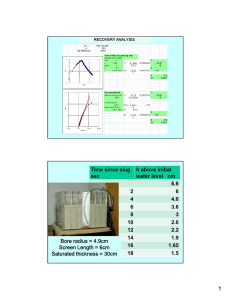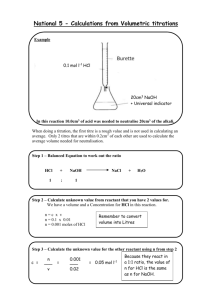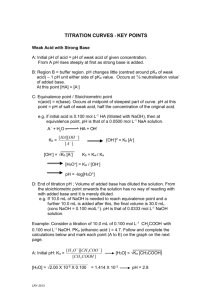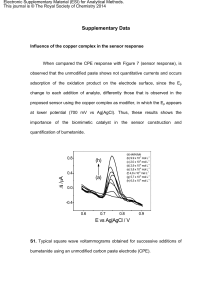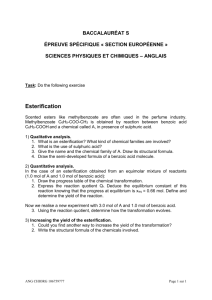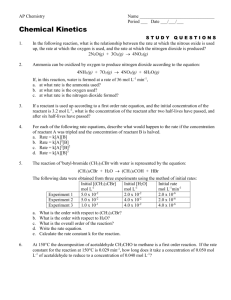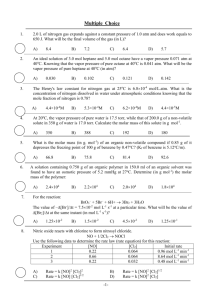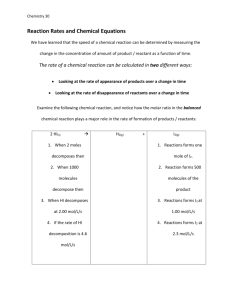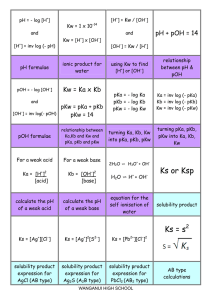acid base unit std style practise
advertisement
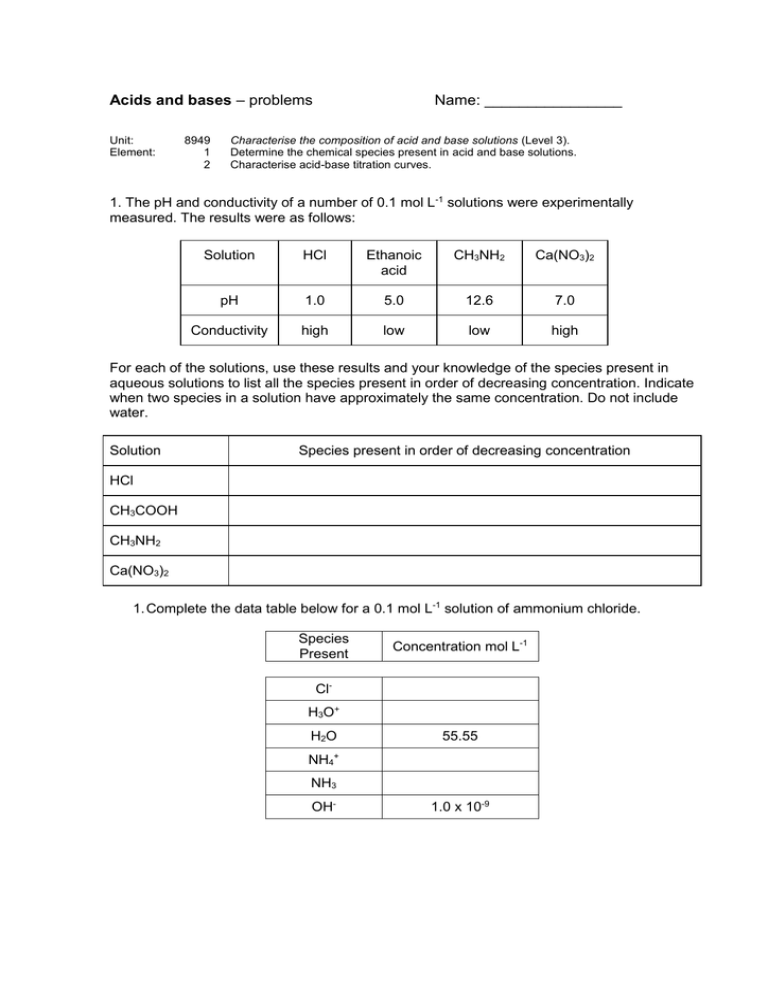
Acids and bases – problems Unit: Element: 8949 1 2 Name: ________________ Characterise the composition of acid and base solutions (Level 3). Determine the chemical species present in acid and base solutions. Characterise acid-base titration curves. 1. The pH and conductivity of a number of 0.1 mol L-1 solutions were experimentally measured. The results were as follows: Solution HCl Ethanoic acid CH3NH2 Ca(NO3)2 pH 1.0 5.0 12.6 7.0 Conductivity high low low high For each of the solutions, use these results and your knowledge of the species present in aqueous solutions to list all the species present in order of decreasing concentration. Indicate when two species in a solution have approximately the same concentration. Do not include water. Solution Species present in order of decreasing concentration HCl CH3COOH CH3NH2 Ca(NO3)2 1. Complete the data table below for a 0.1 mol L-1 solution of ammonium chloride. Species Present Concentration mol L-1 ClH3O+ H2O 55.55 NH4+ NH3 OH- 1.0 x 10-9 Task B Complete each of the following calculations. Answers should be given to 3 significant figures. 1. The pH of a 0.100 mol L-1 benzoic acid solution, C6H5COOH, is 2.60. Calculate the Ka of benzoic acid. 2. A solution contains 0.0473 mol L-1 of hydrofluoric acid, HF (a weak acid). Calculate the pH of this solution if pKa (HF) = 3.18. 3. Sulfide ion, S2-, is a weak base. The conjugate acid is HS-. Calculate the concentration of a solution of sulphide ions if the pH is 9.36 and Ka(HS-) = 6.20 x 10-8. 4. Calculate the pH of a 0.150 mol L-1 solution of NaHCOO given that Ka(HCOOH) = 1.80 x 10-4. Task C Sketch the titration curves for each of the acid-base titrations given below. In each case, estimate the approximate pH value for the initial solution, the equivalence point and the buffer region and use these to sketch the curve. Note: No precise calculations are required, but pH values must be within an appropriate range (plus or minus 1.5 pH units of correct value). 1. Addition of 0.100 mol L-1 NaOH to 20 mL of 0.100 mol L-1 Benzoic acid (C6H5COOH). pKa(benzoic acid) = 4.20. 2. Addition of 0.100 mol L-1 HCl to 20 mL of 0.100 mol L-1 solution of the weak base cyanide ion (CN-). The pKa of the conjugate acid, hydrocyanic acid (HCN) is = 9.21 . Task D From the following list of indicators, select the indicator which is most likely to change colour at the equivalence point for each of the above titrations. Methyl yellow pKa = 3.2 Bromocresol purple pKa = 5.2 Naphtholphthalein pKa = 8.2 Titration Indicator NaOH and benzoic acid HCl and cyanide ion 2.2
